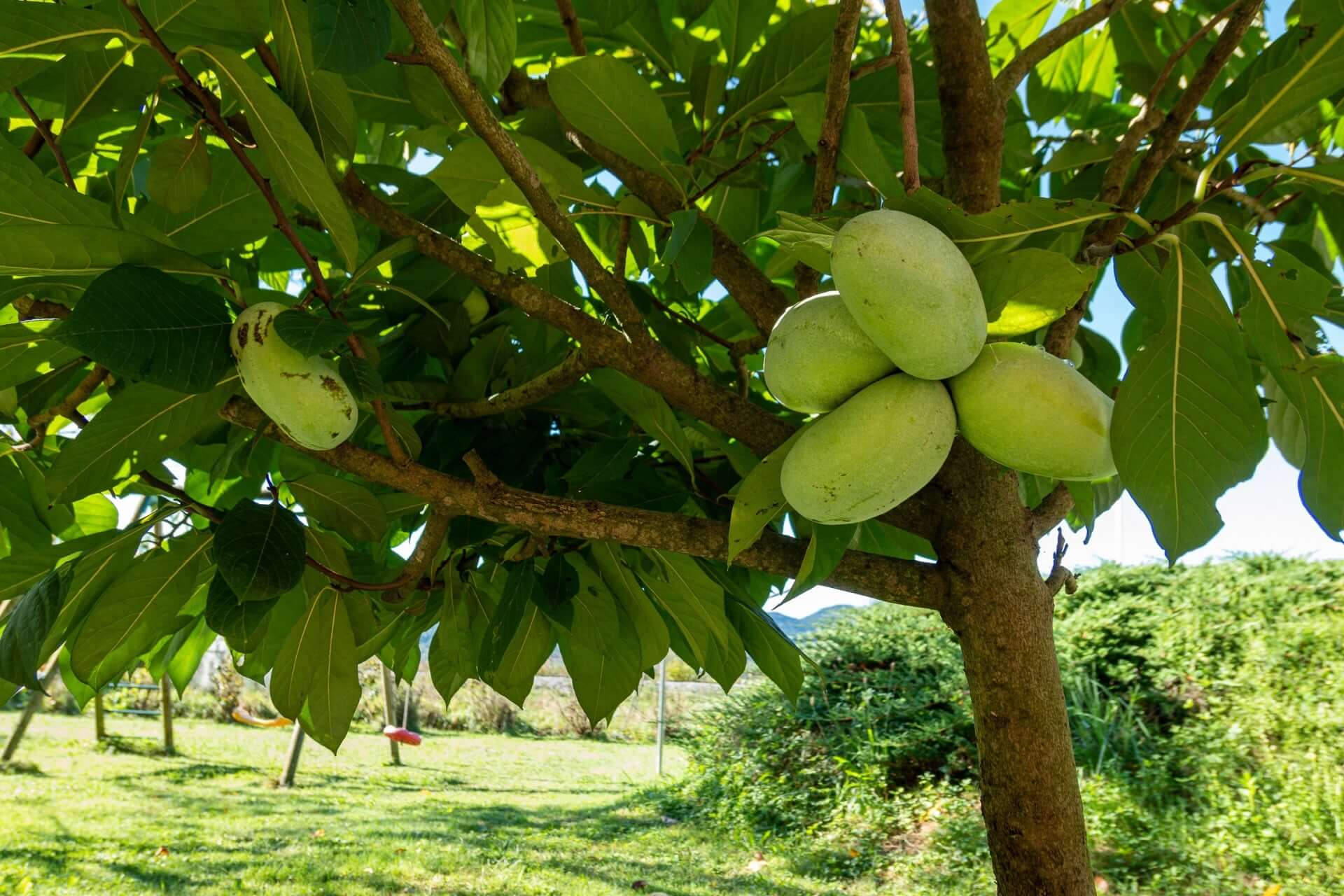The pawpaw tree, native to North America, is a charming complement to any garden, particularly for those looking to cultivate an unusual and rewarding fruit tree. Known for its custard-like fruit with a flavor reminiscent of bananas and mangos, the pawpaw tree has become a must-have for gardeners who appreciate something unique and native to the land. It thrives in its natural habitat, making it an attractive option for those aiming to bring a touch of the wild to their backyards.
How long till a pawpaw tree will bear fruit?
Patience is vital when growing a pawpaw tree; they don't immediately reward you with fruit. Typically, planting takes four to eight years for a pawpaw tree to begin bearing fruit. The tree's age, the growing conditions, and the care it receives all contribute when you finally see the fruits of your labor. While it may seem like a long wait, once the tree begins producing, the payoff is well worth it. The fruits resemble large, greenish-brown mangos, unlike any other you'll grow in your garden.
Pawpaw trees have deep taproots, which means they spend their early years developing a solid foundation underground before dedicating energy to fruit production. This underground development ensures that once the tree does start to bear fruit, it does so consistently and abundantly, with proper care.
During these initial years, it's essential to maintain soil moisture and mulching to mimic the pawpaw's natural understory environment. This period of investment will ensure that once the tree matures, you'll have a healthy, productive tree ready to deliver a unique harvest year after year.
Do you need two pawpaw trees to produce fruit?
Yes, pawpaw trees require cross-pollination, meaning you'll need at least two genetically different pawpaw trees to produce fruit. They are not self-pollinating, so relying on a single tree will result in no fruit. This need for cross-pollination can be challenging because pawpaw trees tend to bloom early in the season when there may not be as many pollinators active. Pawpaw blooms are pollinated by flies and beetles rather than bees, providing an ideal habitat for these insects crucial to a good harvest.
Some gardeners go the extra step of hand-pollinating the flowers to encourage pollination. You can achieve this by using an ear swab to move pollen from bloom to bloom. It's a simple process that can significantly improve your chances of getting fruit, especially in areas with less active natural pollinators.

Alternatively, planting various native plants nearby that attract flies and beetles can help increase the likelihood of successful pollination. By doing this, you create an ecosystem that supports not just the pawpaw but also a range of beneficial insects that contribute to the health of your garden.
Where do pawpaw trees grow best?
Pawpaw trees thrive in areas that mimic their natural habitat: the rich, moist soils of riverbanks and woodland understories. They prefer full to partial shade, especially in their early years when establishing themselves. However, once established, pawpaw trees can tolerate more direct sunlight, particularly if the soil remains consistently moist.
The ideal growing regions for pawpaw trees are U.S.D.A. hardiness zones 5 through 9. These zones cover a broad range of climates, from the cooler northern states to the warmer regions in the south. Pawpaw trees are especially suited for areas with hot summers and cold winters, as these temperature fluctuations encourage better fruit production. Once mature, they are also relatively drought-tolerant, making them a resilient choice for gardeners who may not have the perfect conditions year-round.
Good drainage is essential for pawpaw trees. While they enjoy moist soils, they do not fare well for extended periods. Raised beds or well-drained garden areas are ideal for planting pawpaws.
Is it hard to grow pawpaw?
Growing pawpaw trees does require a bit of dedication, but with the right conditions, they can be a rewarding and relatively low-maintenance addition to your garden. The most challenging part of growing pawpaw is ensuring the young tree is protected from direct sunlight and dry conditions during its early years. Once established, pawpaw trees become much more self-sufficient, requiring less care than fruit trees.
One of the critical considerations when growing pawpaw trees is their sensitivity to root disturbance. Pawpaws have delicate root systems that don't take well to being moved, so it's best to plant them permanently as seedlings rather than attempting to transplant a more mature tree. Starting with a young sapling in the right spot is crucial to long-term success.
Another factor to consider is that pawpaw trees are slow growers. As they put down their deep taproots, above-ground growth can be minimal, which may frustrate gardeners who are used to faster-growing fruit trees. However, this slow growth makes pawpaw trees particularly hardy once they mature. They become more tolerant of various conditions, including occasional drought or poor soil.
Though pawpaw trees may not be the most accessible fruit tree to grow, once established, they more than makeup for the effort with their unique fruit and low-maintenance nature. With the right site selection, attention to pollination, and a little patience, pawpaw trees can be an exciting and fruitful part of your garden, offering delicious rewards.


